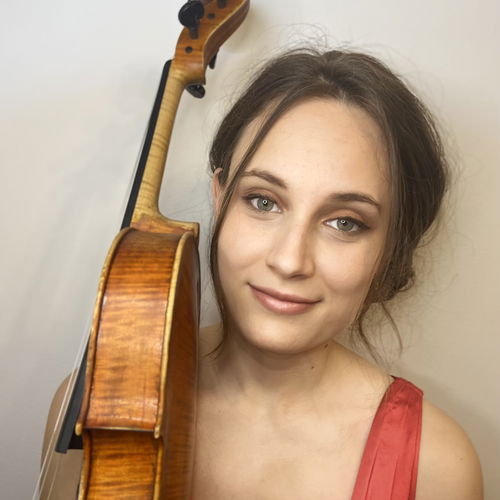Haydn, Bartók, and ROSALÍA
Details
Noemie Chemali full profile / String Quartet / 4 musicians
Other players: Carina Yee, Roni Shitrit, Gustavo Antoniocomi
Full program notes
Tonight’s program traces a bold arc across three centuries of string writing, moving from the elegance and wit of the Classical era to the stark modernism of the early 20th century and finally to a contemporary reimagining of flamenco through the lens of global pop. Though these works differ widely in style, each explores the expressive possibilities of the string quartet—and, more broadly, how musical traditions evolve and endure.
Composed during Haydn’s final years in service to the Esterházy court, Op. 64 No. 4 belongs to the so-called “Tost” quartets, named for the violinist Johann Tost, who championed the set. The quartet opens with a lyrical Allegro marked by Haydn’s trademark balance between grace and surprising dramatic turns. The central slow movement, in the warm key of E major, unfolds with operatic tenderness, its long-breathed melodies hinting at Haydn’s gift for vocal writing. A minuet follows that is anything but courtly—its syncopations and unexpected accents feel mischievous rather than polite. The finale then bursts forward with a rustic, folk-like energy, showcasing Haydn’s brilliant sense of timing and playful virtuosity. As in so many of his quartets, Haydn’s Op. 64 No. 4 reveals the form’s expressive range at a moment when he was codifying what the modern string quartet could become.
Composed during the upheavals of World War I, Bartók’s Second Quartet is a stark, deeply human work that confronts extremes of emotion. Across its three movements, Bartók blends elements of Hungarian folk music with his signature modernist language. The first movement is introspective and haunting, built from small motivic fragments that bloom into austere lyricism. The central movement—a vigorous, rhythmically driven Allegro—explodes with propulsive folk rhythms and biting dissonances, a whirlwind of motion that Bartók described as a kind of “dance.” The final movement returns to a world of desolation: sparse textures, lamenting lines, and a sense of suspended time. Bartók described its character as “a message of an inner world,” and indeed the quartet ends not with resolution but with quiet disappearance. In its emotional breadth and structural clarity, the Second Quartet stands as a cornerstone of 20th-century chamber music.
Other programs from this ensemble
Middle Eastern Contemporary Works
- Musician profile: Ensemble Phoenicia
-
Instruments: String Quartet and Clarinet
- Musicians: Noemie Chemali, Amer Hasan, clarinet; Charlotte Loukola, violin; Insia Malik, violin; Noémie Chemali, viola; Raffi Boden, cello

 Continue with Facebook
Continue with Facebook
 Continue with Google
Continue with Google
 Continue with Apple
Continue with Apple
